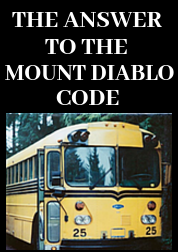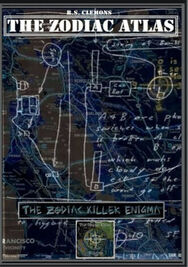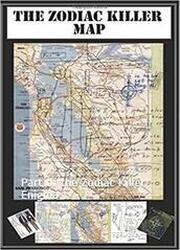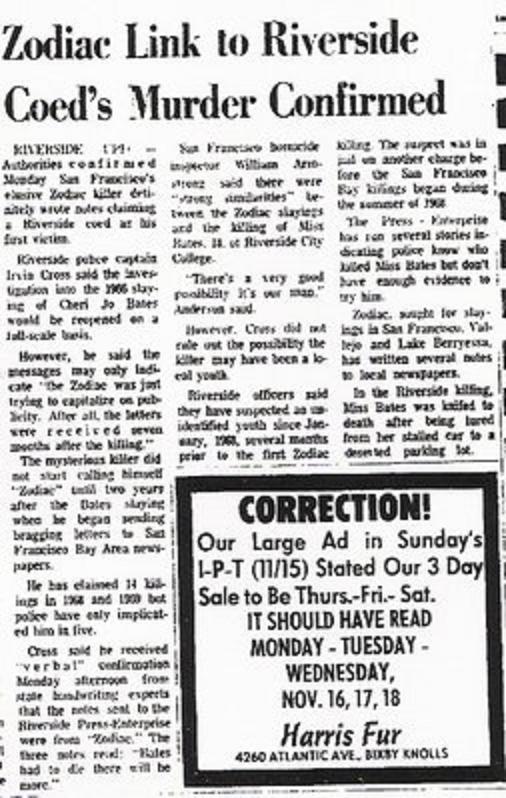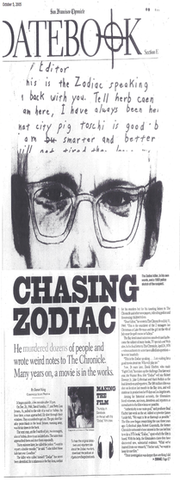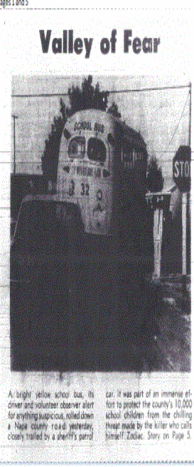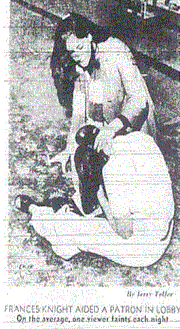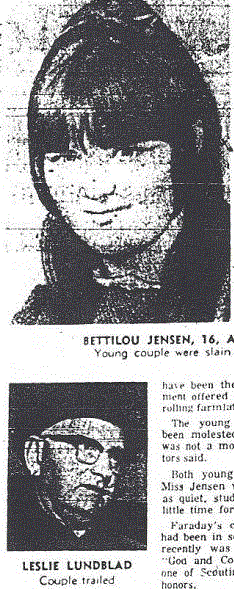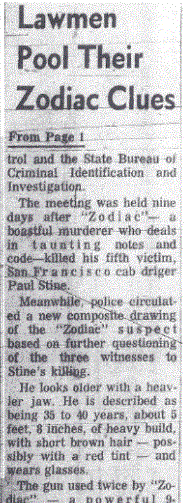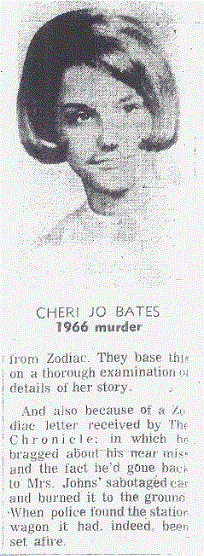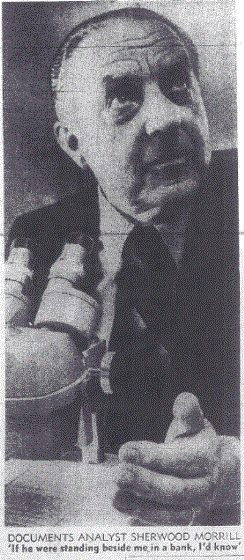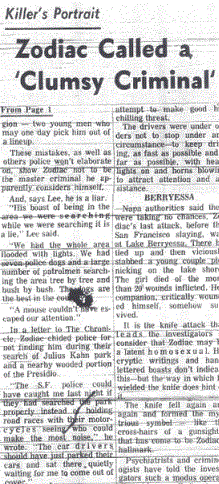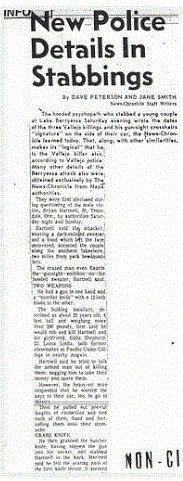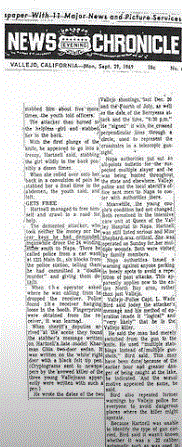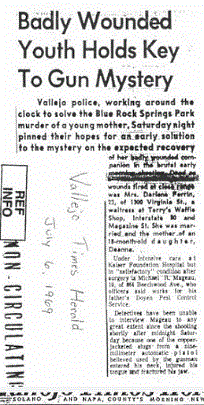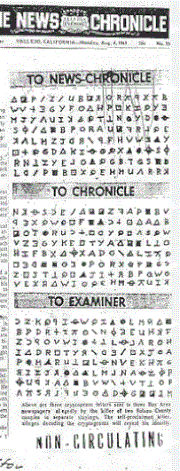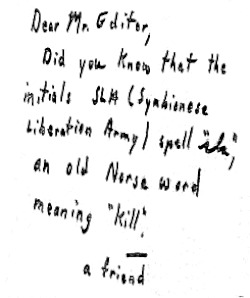
Sla in Old Norse can be inferred as "kill", to which the author of this communication claimed. Sla in Old Norse means "to strike" or "to smite". The archaic use of the word "smite" as shown by the Merriam-Webster dictionary, defines "smite" as to kill or severely injure. In Wiktionary it is shown as the ability to strike down or kill with deadly force. So (in archaic usage like Old Norse) "sla" means "smite", and "smite" is used as "kill". Here is a PDF of Old Norse from York University, compiled by Ross G. Arthur. This will confirm that the author of the SLA Letter was correct all along. The author didn't write "Dear Mr Editor, Did you know that the initials SLA (Symbionese Liberation Army) spell "sla", an old Norse word with a direct translation to "kill". a friend". They used the word "meaning", which is something that it expresses or represents - and "sla" can represent or express the word "kill" through "smite". The whole communication was dedicated to highlighting the word "kill" through Old Norse.
Old Norse was a North Germanic language that was spoken by inhabitants of Scandinavia and their overseas settlements from about the 9th to the 13th centuries. The Proto-Norse language developed into Old Norse by the 8th century, and Old Norse began to develop into the modern North Germanic languages in the mid- to late 14th century, ending the language phase known as Old Norse. These dates, however, are not absolute, since written Old Norse is found well into the 15th century. Old Norse was divided into three dialects: Old West Norse, Old East Norse, and Old Gutnish. Old West and East Norse formed a dialect continuum, with no clear geographical boundary between them. For example, Old East Norse traits were found in eastern Norway, although Old Norwegian is classified as Old West Norse, and Old West Norse traits were found in western Sweden. Most speakers spoke Old East Norse in what is present day Denmark and Sweden. Old Gutnish, the more obscure dialectal branch, is sometimes included in the Old East Norse dialect due to geographical associations. It developed its own unique features and shared in changes to both other branches. Inscriptions have become synonymous with Runes. Wikipedia.
If the Symbionese Liberation Army were the architects of the SLA Letter, then the whitewashed symbols of the Exorcist Letter from the San Francisco Chronicle newspaper on January 31st 1974 would only be known to the designer of the SLA Letter, If those symbols also highlighted the word "kill" or the verb "to kill", we could conclude the SLA Letter was simply the answer to the Exorcist Letter. There have been several examples of people trying to compare runic symbols to the Halloween Card and Asian style characters to the Exorcist Letter. Kevin Robert Brooks, an avid Zodiac researcher, used neither in decoding the Exorcist Letter to spell the words "To Kill", and thereby tying the January 29th and February 3rd communications into one neat bundle (shown below).
The letters K, I and L mimic the symbols used by Kevin Robert Brooks to form the word "kill", and the exclamation type symbol is used to form "T'Kil", thereby phonetically creating the sound "To Kill" using runic symbols (running from left to right on the Exorcist Letter). This last section is not claiming an answer in the slightest, just searching for a correlation between ancient or archaic characters in keeping with Old Norse from the following communication.
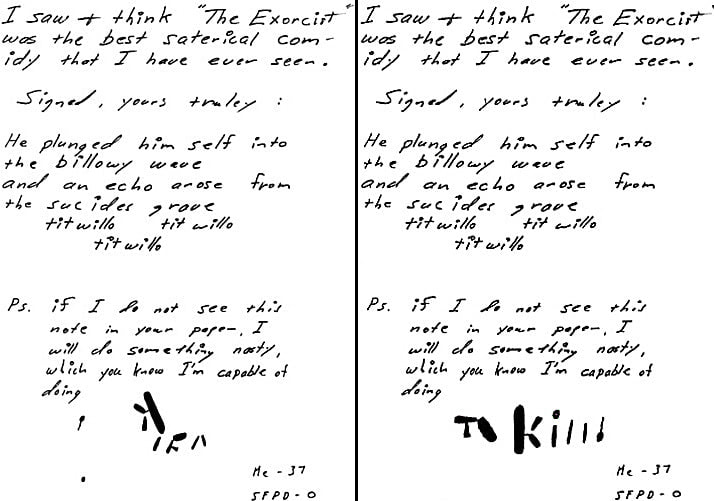

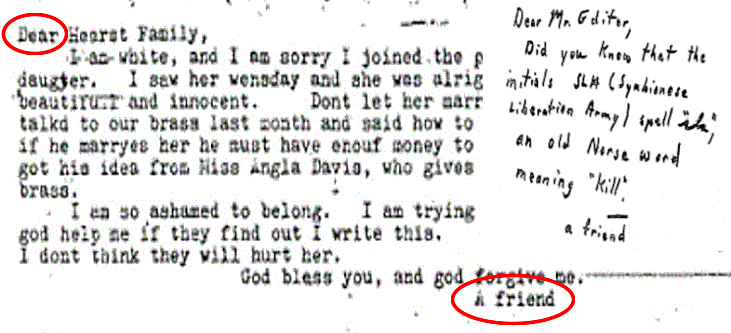

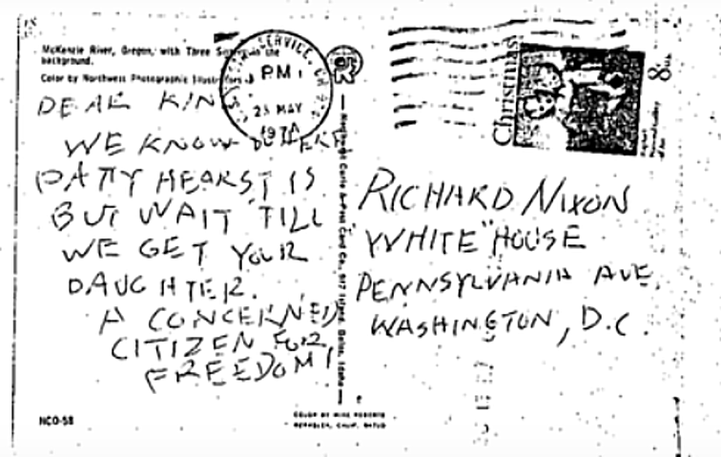


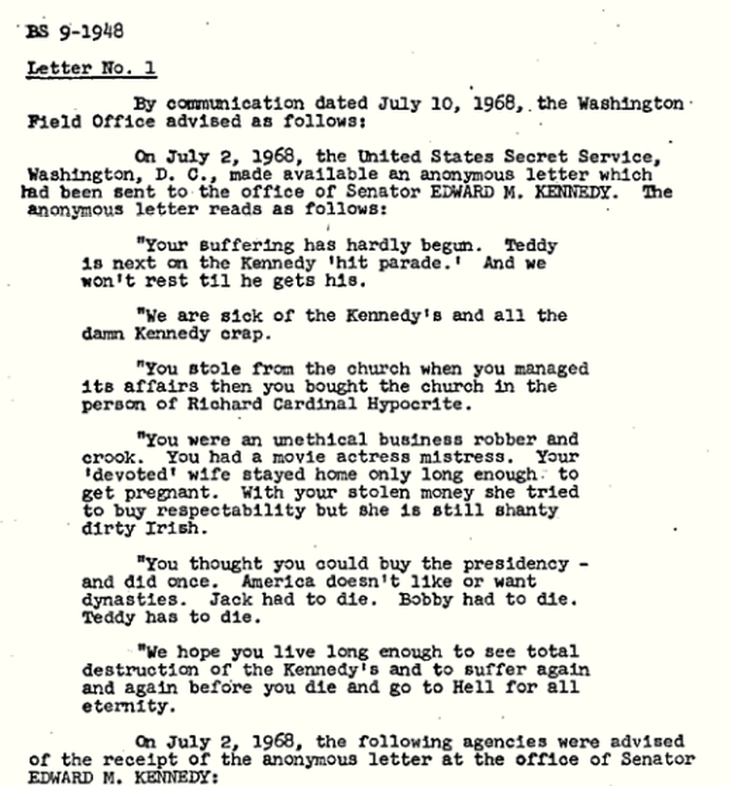



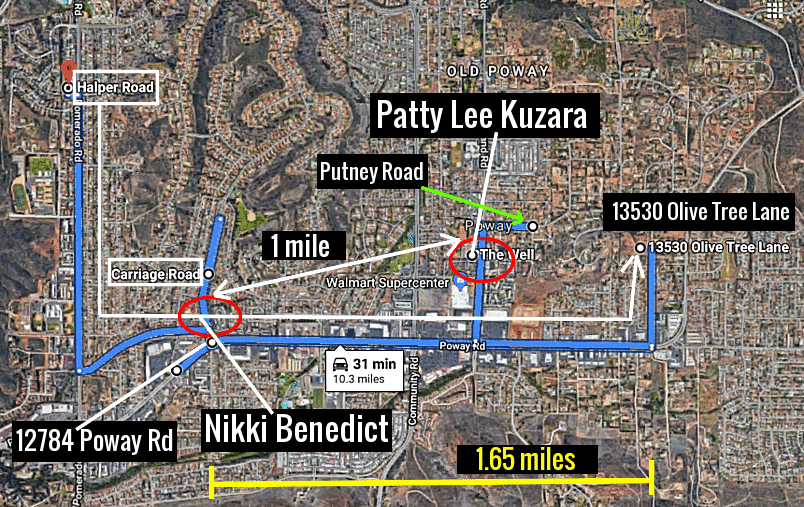

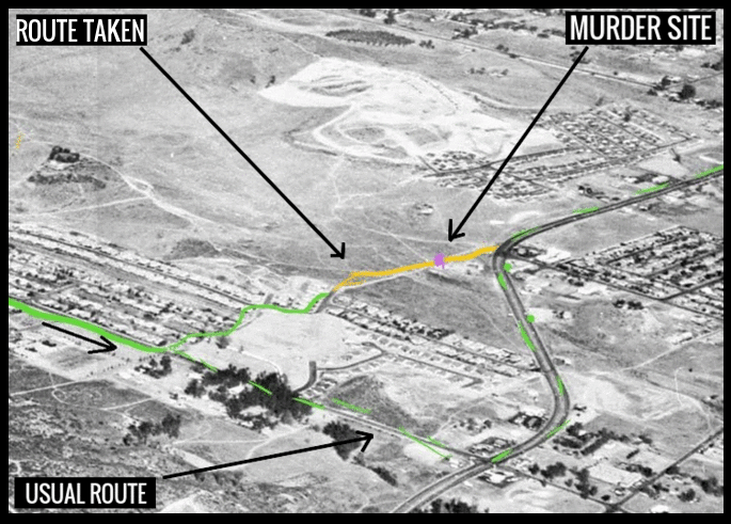

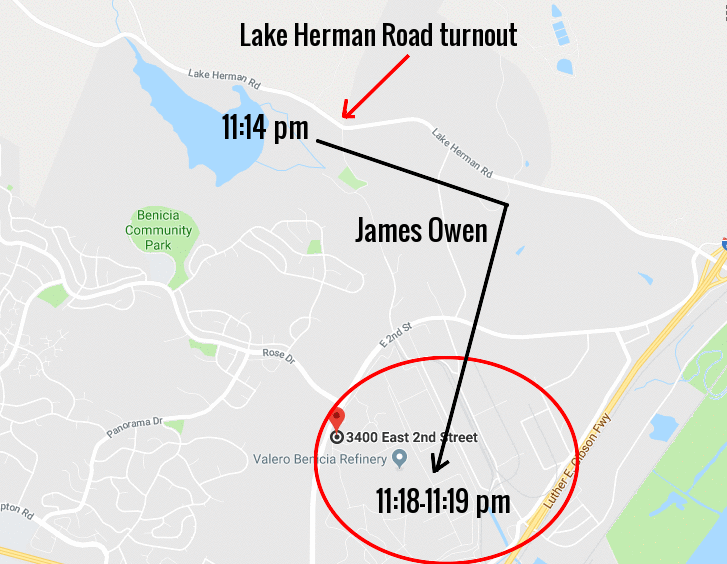
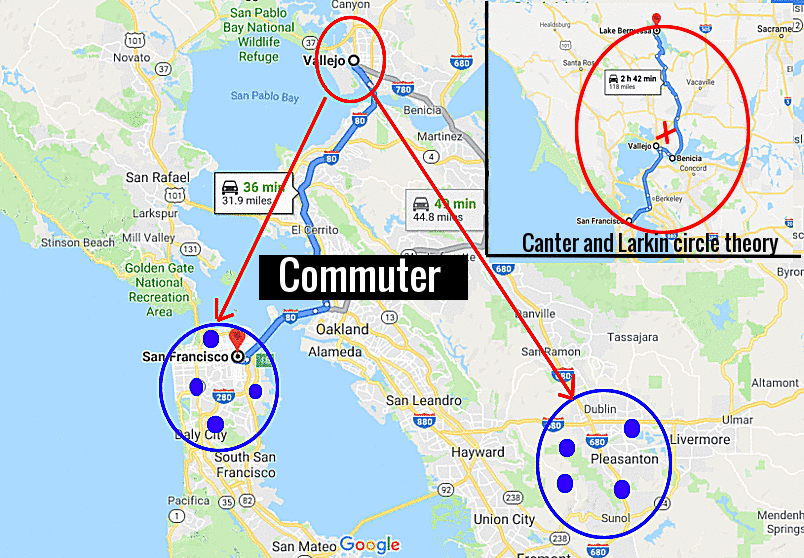


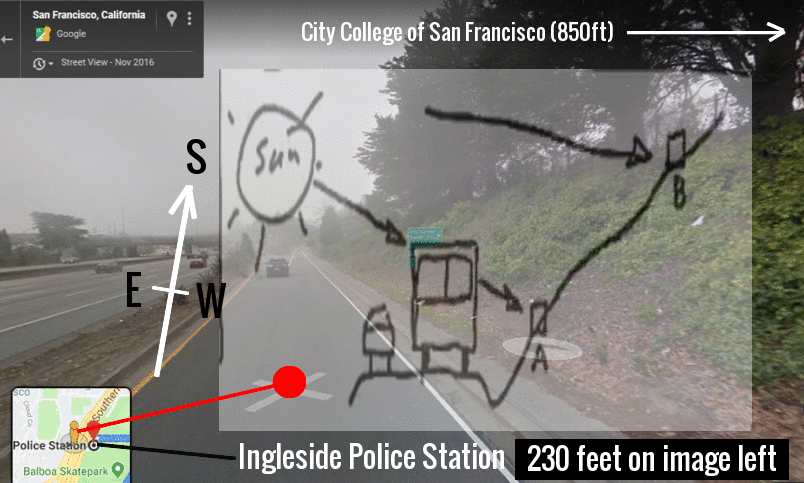
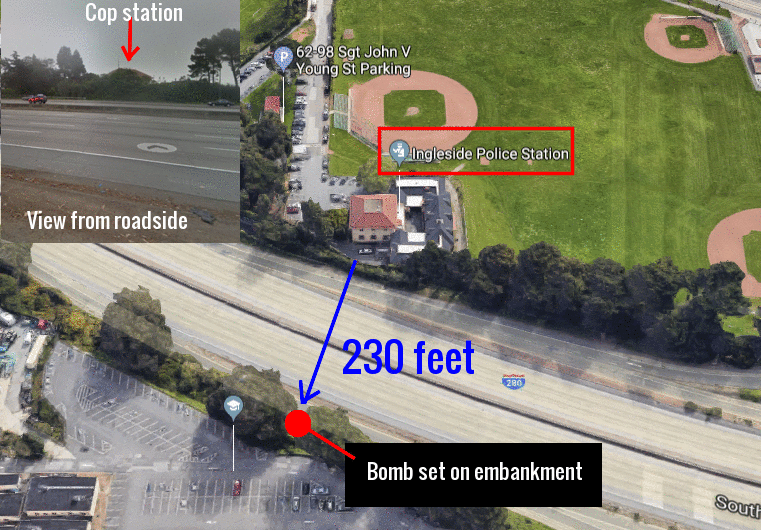
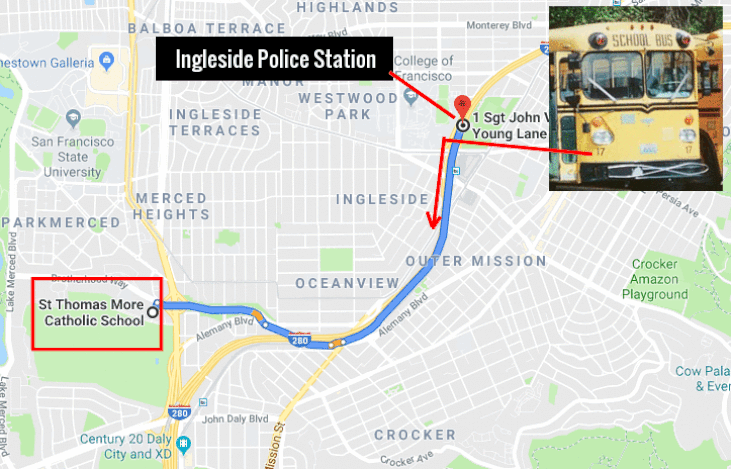




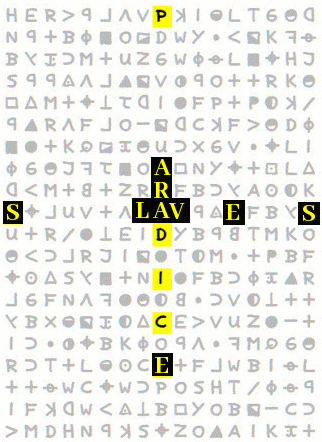




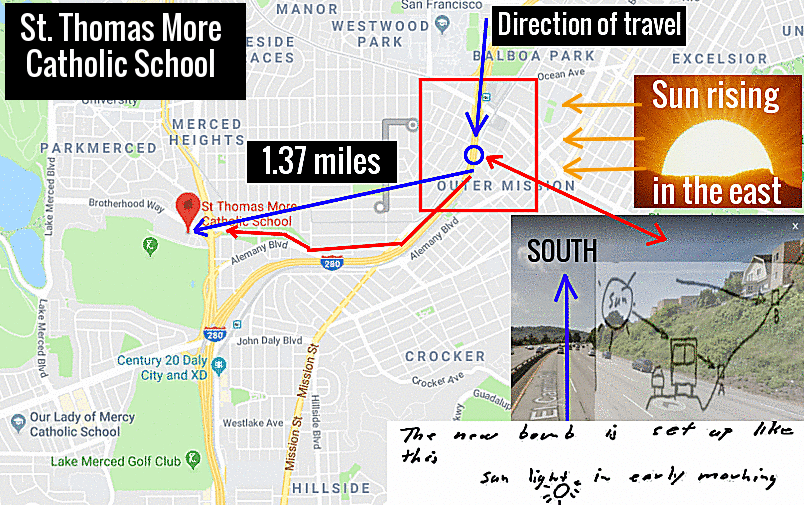
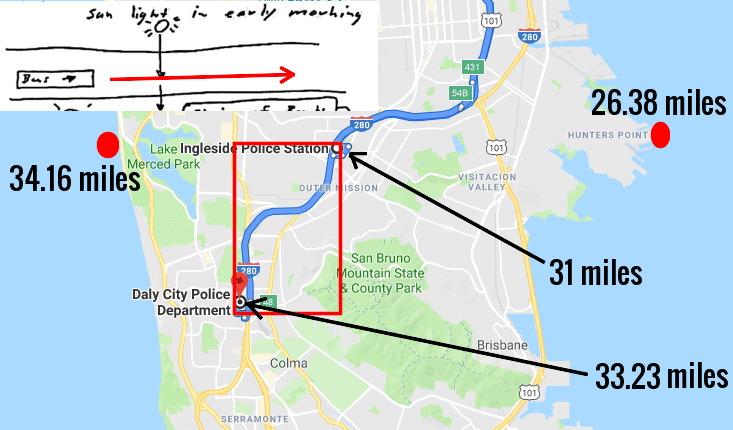
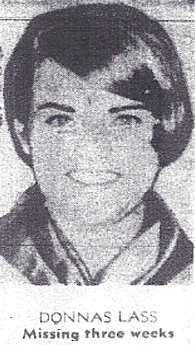
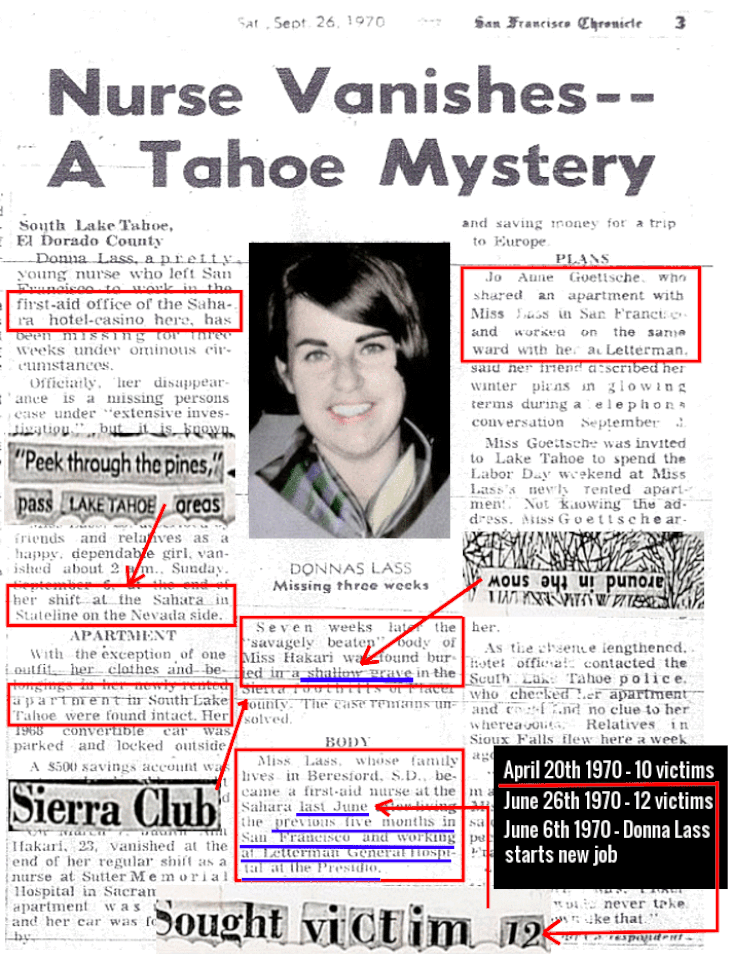
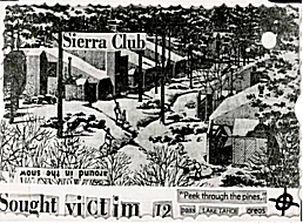

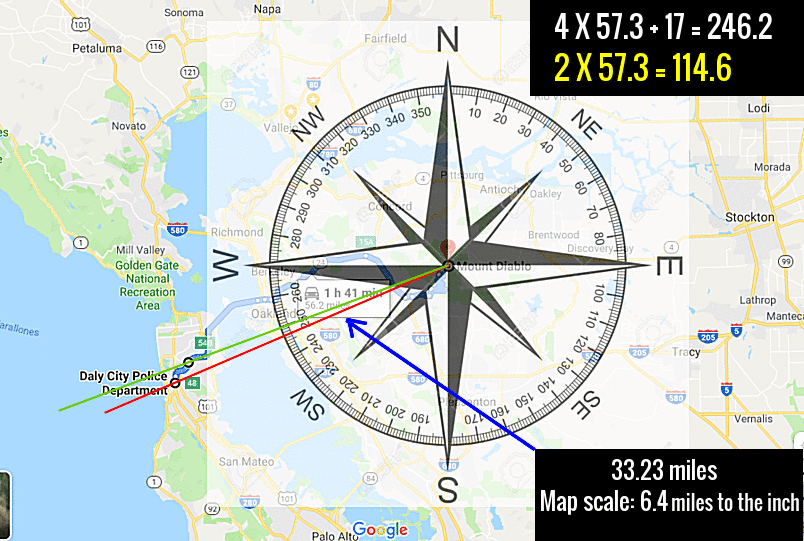
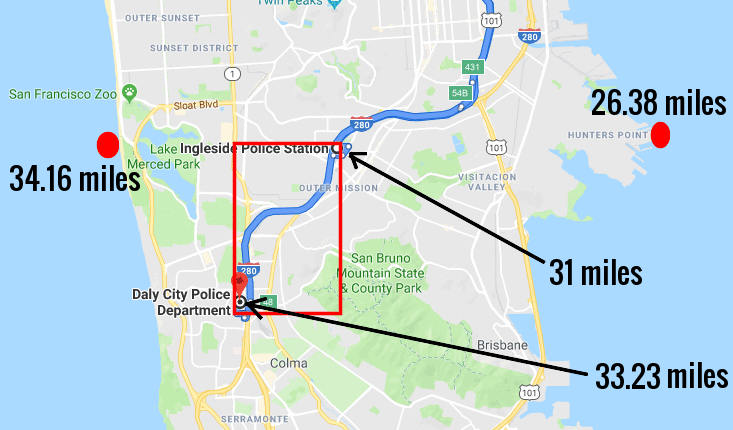


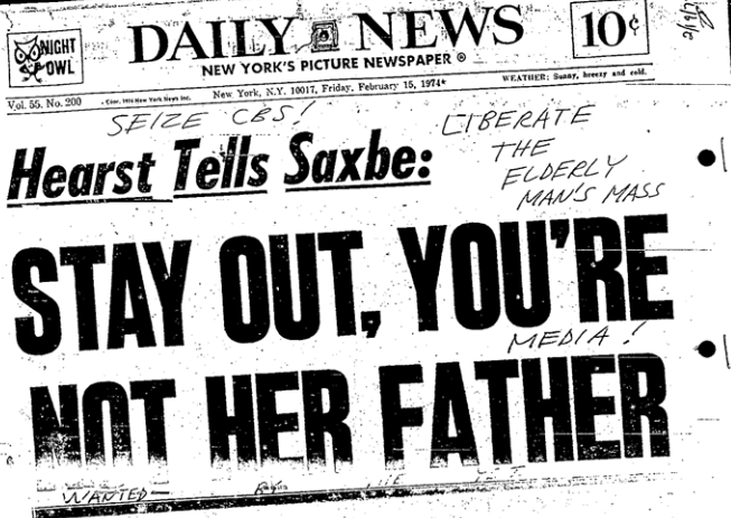



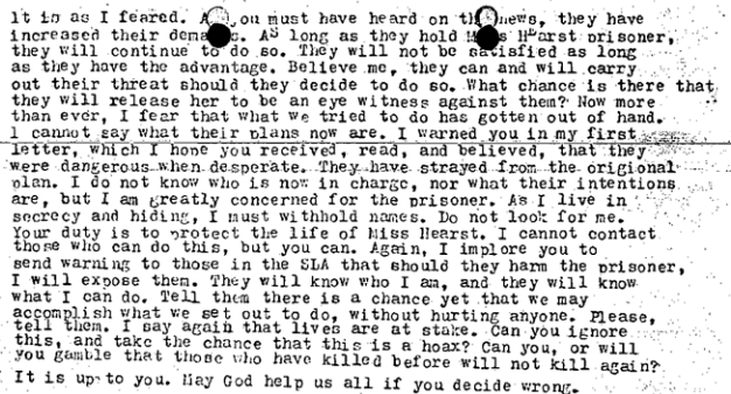
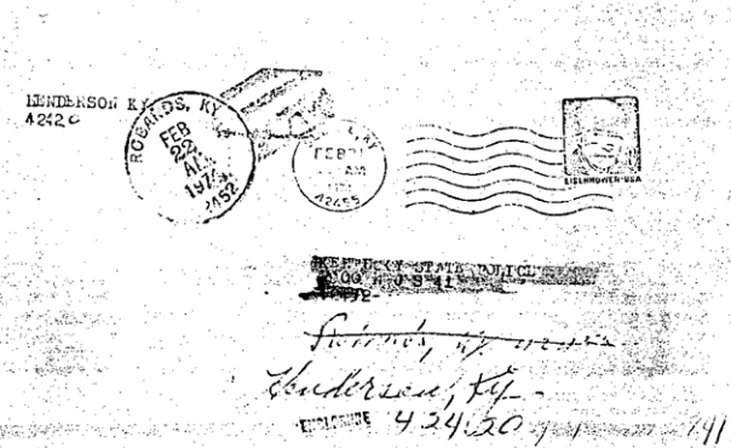



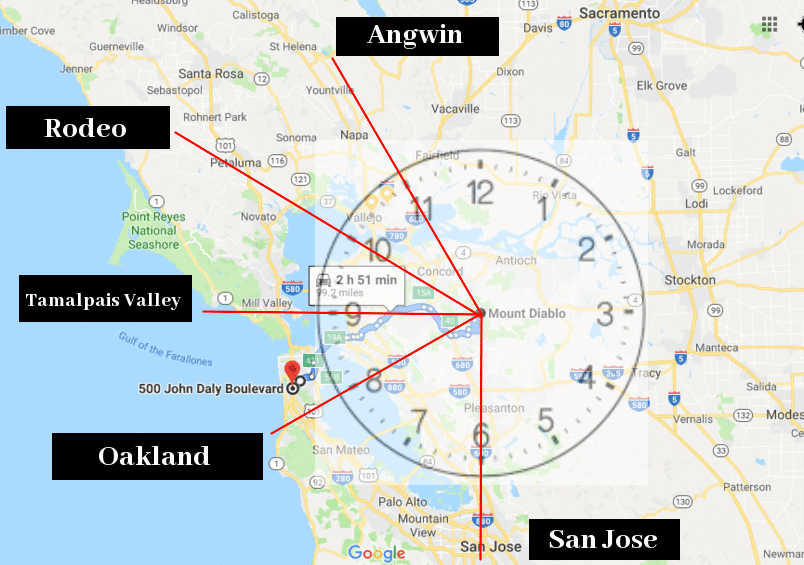




 RSS Feed
RSS Feed

